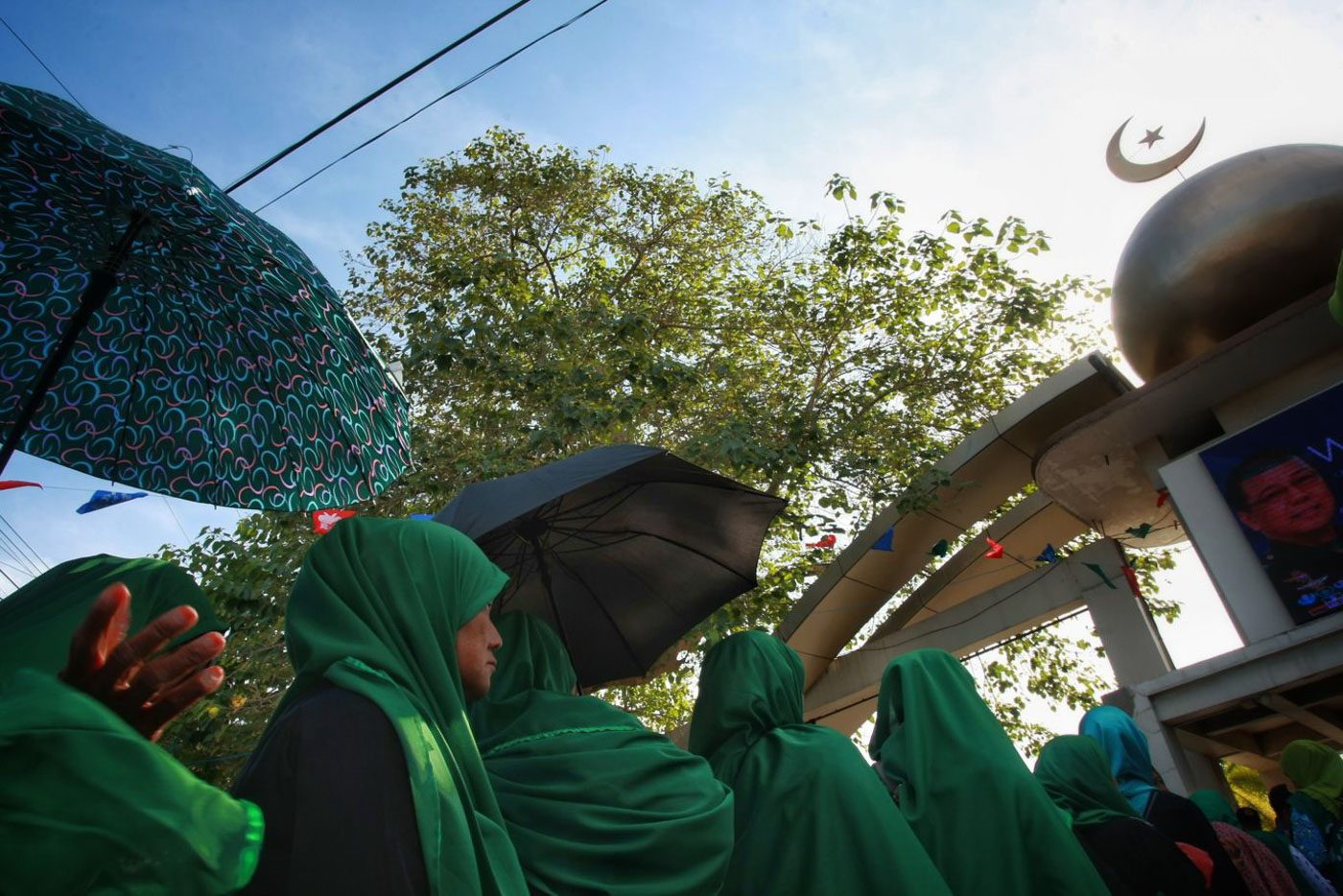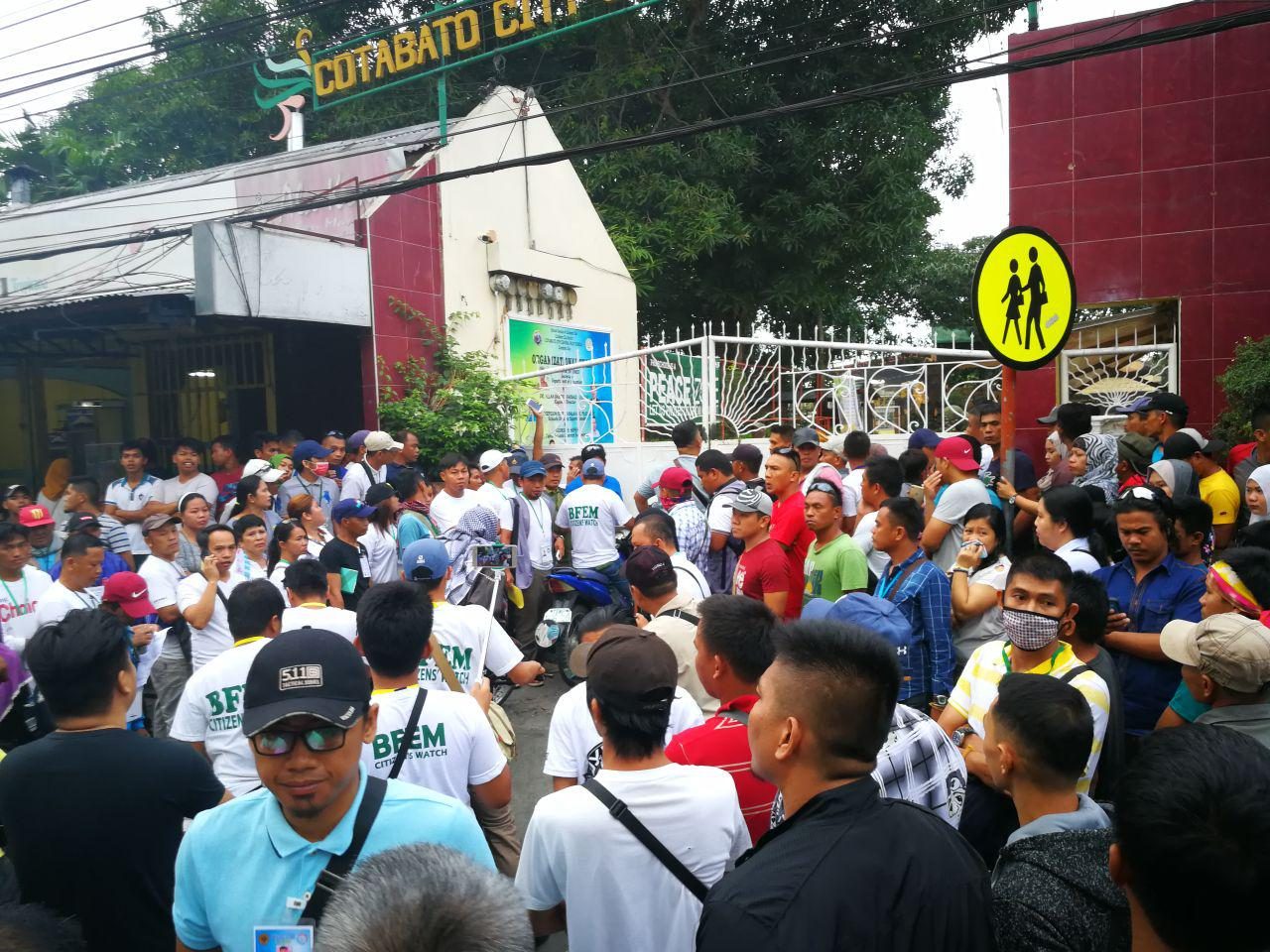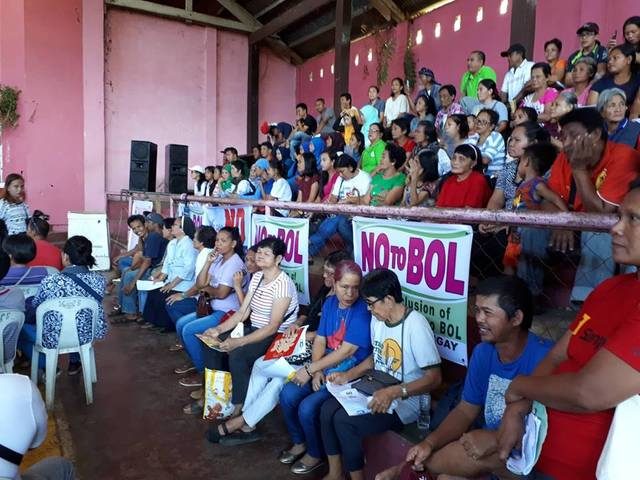SUMMARY
This is AI generated summarization, which may have errors. For context, always refer to the full article.

MANILA, Philippines (UPDATED) – On Friday, January 25, the National Plebiscite Board of Canvassers (NPBOC) not only declared the ratification of the Bangsamoro Organic Law (BOL), it also announced the inclusion of Cotabato City in the new region to be created under the law.
Cotabato City, together with Isabela City, was a coveted area during the Bangsamoro plebiscite. The two cities previously rejected their inclusion in the Autonomous Region in Muslim Mindanao (ARMM).
The city of Isabela, however, rejected inclusion again.
The lead-up to the plebiscite for the BARMM – even during the crafting of the BOL – has been controversial amid opposition from local officials in these cities to their possible inclusion in the BARMM.
Supporters of the “yes” vote, meanwhile, hyped up their campaign starting December 7 for a strengthened region. (READ: Land of promise: Why the Bangsamoro plebiscite matters to you)
Cotabato City – The de facto seat of ARMM’s power
Official results show that Cotabato City voted to be part of the BARMM.
Considered the coveted “crown jewel,” the city saw an intense Bangsamoro plebiscite debate that was also marred by aggressive campaigning from both sides. In fact, Mayor Cynthia Guiani Sayadi has openly opposed the city’s inclusion in the BARMM, citing continuous harassment from the Moro Islamic Liberation Front (MILF).
This victory means that Cotabato City can continue to host the new region’s government offices – if the BOL is ratified. This saves officials from the crucial process of finding a new location.
The city had twice before voted against joining the ARMM in the past – during the 1989 plebiscite for Republic Act 6734, which created the ARMM, and during the 2001 plebiscite for Republic Act 9054, which “expanded and strengthened” the previous law.

But despite not being a part of ARMM, Cotabato City houses most of the region’s offices and is considered the de facto seat of the regional government.
Classified as an “independent component city,” it is not under the regulation of the Maguindanao provincial government where it is geographically located. It is, however, considered a part of the province’s legislative first district.
Registered voters in this city cannot participate in provincial elections. It is also administratively part of the Soccsksargen.
In 2015, Cotabato City registered a population of 299,438 across 39 barangays. Out of this number, 228,036 are Muslims, according to the latest census of the Philippine Statistics Authority (PSA).
PSA also pegged the annual population growth rate of Cotabato City at 5.19% from 2000 to 2010 and if this continues, the city’s population will likely double in 13 years.
As of 2015, Cotabato City is considered a 3rd class city in terms of income, meaning its annual city income ranges from at least P240 millon to P320 million. A center of economic activities, Cotabato City has 19 banks, with 148,518 bank accounts having P19,725,567 in bank deposits, according to the June 2018 report of the Philippine Deposit Insurance Corporation.
Despite this, about 31.6% of families in Cotabato City live below the poverty line. The city’s poverty threshold, as of 2015, is pegged at P21,825. Poverty threshold refers to “the minimum income/expenditure required for a family/individual to meet the basic food and non-food requirements.”
Isabela City, Basilan’s former capital

Unlike Cotabato City, the city of Isabela once again rejected its inclusion in the region even though its mother local government unit, the province of Basilan, is part of the BARMM. Basilan, in fact, overwhelmingly voted in favor of Isabela’s inclusion.
While the province is part of ARMM, its city is not after it rejected inclusion during the 2001 plebiscite. This led to Basilan moving its capital to Lamitan City.
Prior to the plebiscite, the city of Isabela is regulated by the provincial government, meaning, tax revenues are still shared with Basilan and residents can vote and run in provincial elections, among other province-specific services.
But the city is considered to be part of Zamboanga Peninsula – not ARMM – so residents cannot run or vote for officials of the ARMM’s regional legislative assembly.
Isabela City’s estimated population of 112,788 – with 72,182 Muslims – will now continue to remain outside the Bangsamoro region.
As the final and official results show that Isabela City rejected inclusion in the BARMM – regardless of the results in Basilan province – the city will not be part of the BARMM because “inclusion requires a double majority,” Jimenez said. A double majority means the “yes” vote should win in both Isabela City and the whole of Basilan for the city to be included in the BARMM. – Rappler.com
Add a comment
How does this make you feel?
There are no comments yet. Add your comment to start the conversation.